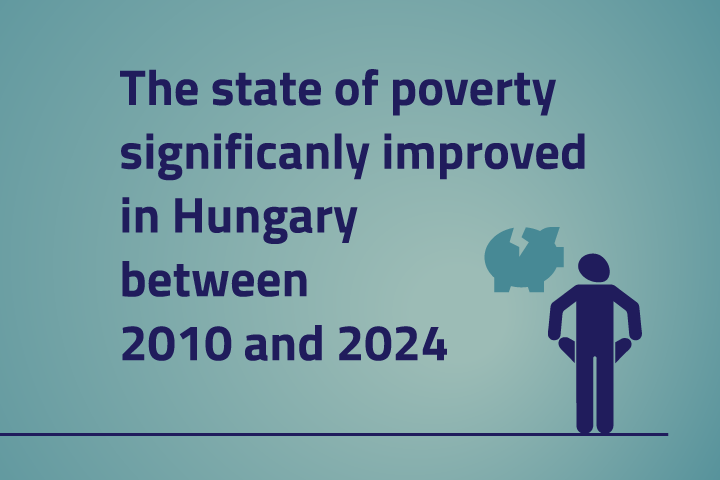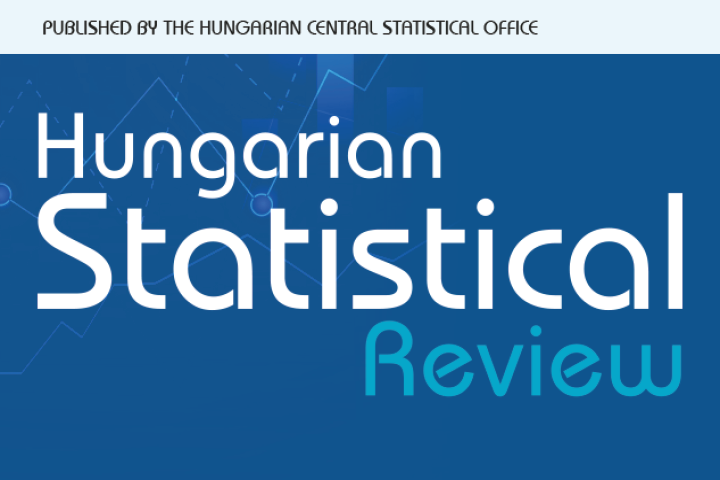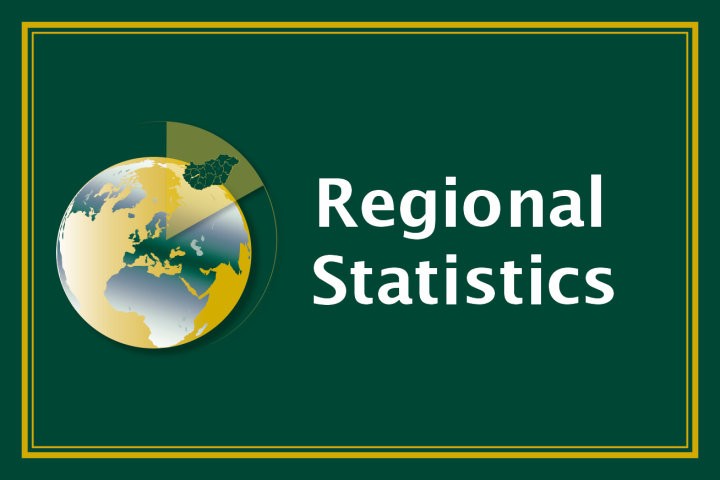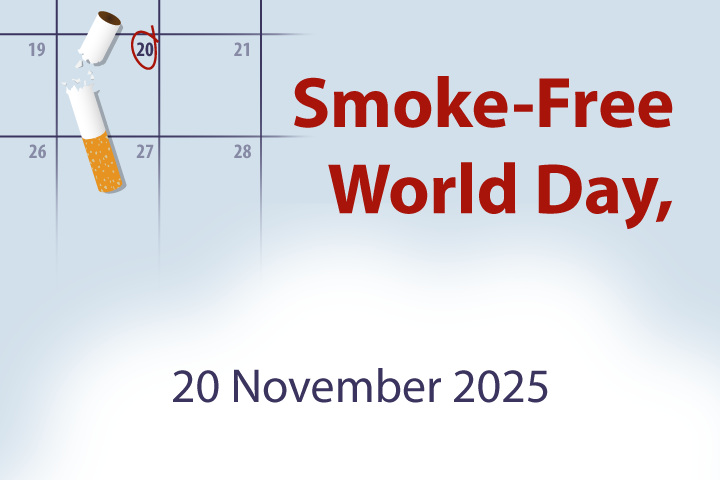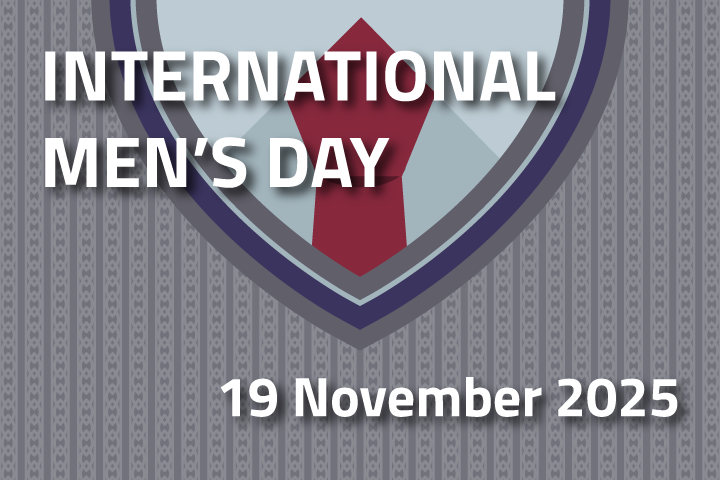Key figures
Inflation
Indicator description
Average change in the prices of goods and services purchased by households for own use, compared to the same period of the previous year. The consumer price index less 100 equals the inflation rate.
Source:
Summary tables (STADAT)
Latest data: –
GDP
Indicator description
Gross domestic product is the sum of gross value added produced by industries or sectors, valued at basic prices, and of the balance of taxes and subsidies on products, which cannot be divided by industry or sector, less financial intermediation services not divided by industry or sector. GDP volume change compared to the same period of the previous year is presented based on unadjusted data.
Source:
Summary tables (STADAT)
Latest data: –
Adjusted population
Indicator description
The full-scope censuses conducted every ten years show a comprehensive picture of the number and composition of the population. For determining the annual population number in the period between two censuses, the starting point is the population number of the last census (currently the census with the reference date of 1 October 2022), and from this, the population was estimated by using natural increase or decrease data available from the statistics of vital events until 2000. From 2001 international migration is also taken into account.
Source:
Summary tables (STADAT)
Latest data: –
Unemployment rate
Indicator description
The ratio of unemployed persons to the economically active population of corresponding age. The indicator can be calculated for different age groups, the default is the age group 15–74. Further selected age groups: 15–24, 25–54, 55–74.
Source:
Summary tables (STADAT)
Latest data: –
Employment rate
Indicator description
The ratio of employed persons to the population of corresponding age. The indicator can be calculated for different age groups, the default is the age group 15–64. Further selected age groups: 15–24, 25–54, 55–64 and 20–64.
Source:
Summary tables (STADAT)
Latest data: –
Industrial production
Indicator description
We measure changes of industrial production by variations of industrial production values, however the impact of price change is filtered out. We calculate the volume index of production based on comparative prices data of the industrial production value (presented at reference period price levels).
Source:
Summary tables (STADAT)
Latest data: –
Featured
HCSO Monitor
The collection of interactive figures provides up-to-date information on the latest domestic and international socio-economic trends.
The decisive part of the figures included in HCSO Monitor are downloadable in both image and data formats (PNG, SVG and CSV).
Feel free to browse the data in HCSO Monitor, updated many times a week!
Latest update: 20/11/2025
The decisive part of the figures included in HCSO Monitor are downloadable in both image and data formats (PNG, SVG and CSV).
Feel free to browse the data in HCSO Monitor, updated many times a week!
Latest update: 20/11/2025
Hungarian Statistical Review, Vol. 8, No. 2, 2025
The current issue of the Hungarian Statistical Review of HCSO publishes articles on the following topics: the first paper examines the causality between trade, domestic savings, and economic growth in Ethiopia; the next one deals with determinants of exchange rate volatility in Ghana; modeling the volatility of the top three pharmaceutical sector stocks in the Indonesia using a two-stage modeling approach; on statistical properties and application of Poisson-Sujatha distribution; the relationship between financial literacy and financial vulnerability among disadvantaged social groups in Hungary; an examination of gender pay differences in Kenya, emphasizing the role of educational attainment in shaping earnings’ disparities.
25/11/2025
25/11/2025
Regional Statistics, Volume 15, Number 6, 2025
The latest issue of the scientific journal features studies on the following topics: the spatial variation in the determinants of human capital concentration in Tunisian local labour markets; the spread of Covid-19 based on internet search data at Hungary’s NUTS 2 level; technological capabilities and economic growth in the V4 countries; the relationship between attitudes regarding AI and material deprivation in Hungary; economic performance and energy management; asymmetries in retail fuel prices in the EU; interstate sugar price relationships between Florida, Texas, and Louisiana; urban–rural population trends in Europe.
20/11/2025
20/11/2025
Smoke-Free World Day, 20 November 2025
The idea of the smoke-free day started in the 1970s in the United States, with the goal of helping smokers in quitting. Due to the American success a smoke-free day is observed every year around the world on the third Thursday of November. The proportion of smokers in Hungary is still above the EU average. Sale of tobacco products had a 6.7% share in our domestic retail turnover of 2024. The import of tobacco and tobacco substitute products is greater than their export within the external trade.20/11/2025
International Men’s Day, 19 November 2025
International Men’s Day is celebrated every year on 19 November all over the world. The idea originates from the 1960s, however it set off in its present form in 1999 with the support of the UN, from Trinidad and Tobago from the Caribbean region. Its purpose is to focus on the role men are playing and the social challenges they face. It is more and more recognized in Hungary, too, where its health maintenance and role of fathers features are highlighted on this day.19/11/2025
European Statistical Monitor: November edition
The chart collection contains monthly and quarterly indicators of economic and social developments by country and over time. The monthly updated chart collection with the latest available data for each indicator is available here.
18/11/2025
18/11/2025
Did you know? – Theatre
The 2024 theatre attendance reached 7.2 million in Hungary.
If you liked it, check out our data visualisations at this link: www.ksh.hu/datavisualisations
11/11/2025
If you liked it, check out our data visualisations at this link: www.ksh.hu/datavisualisations
11/11/2025
Hungary 1st semester of 2025 – Diverging economic impacts
The performance of Hungary’s economy was identical with the one of the same period of the previous year. The increasing performance of the services sector and consumption growth had a positive impact on GDP. These impacts however have been eliminated by the setback of the industry and agriculture, the continuously subdued investment activity and the deterioration in the balance of the external trade in goods. Retail trade volume continued to rise, tourism nights spent at accommodation establishments also increased in number.
10/11/2025
10/11/2025
Snapshots, 2024 – Culture
Hungarian radio broadcasting is 100-year-old. The first broadcast started on 1 December 1925 with a festive concert. The popularity of music programs is continuous ever since, their share in the total broadcast time was 62% in 2024.
An ever-growing proportion of Hungary’ cinema seats – 42% in 2024 – are concentrated in multiplex cinemas with 8 or more auditoriums. Attendance of Hungarian films broke the record this year, out of the 10.7 million cinema tickets sold 14.5% were for domestic films.
10/11/2025
10/11/2025
First releases
News, events
- Experimental Statistics and Innovation at the HCSO – New Data, New Approaches, 25 November 2025, 26/11/2025
- IT maintenance on 27 November, 24/11/2025
- Launch of the Agricultural Census of Individual Farms, 17/11/2025
- 110th DGINS Conference, 13/11/2025
- Independence, transparency, openness – The trends of poverty indices did not change in merit, 13/11/2025

